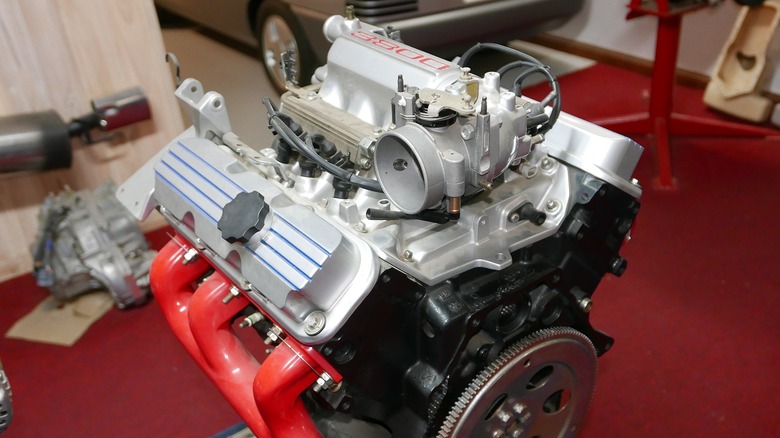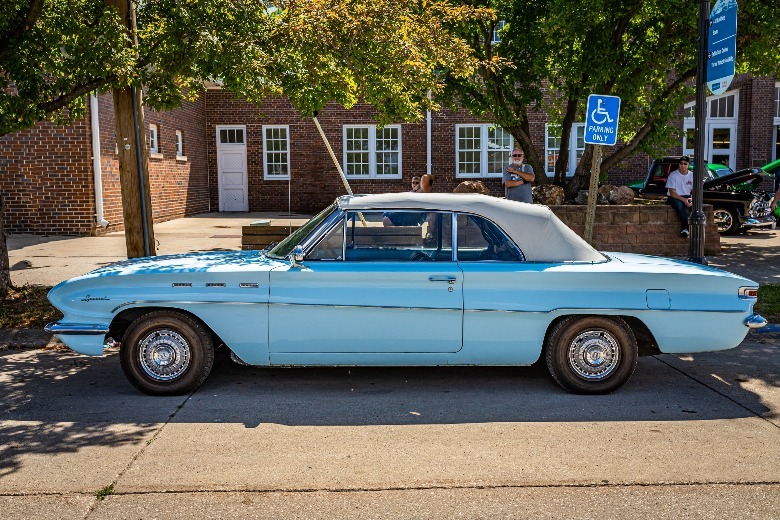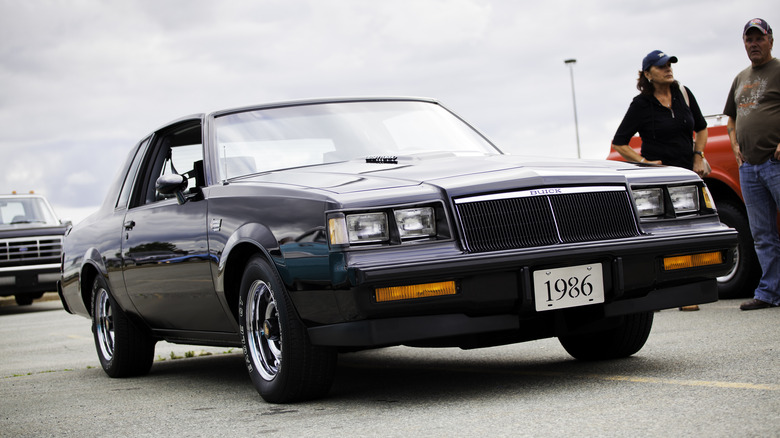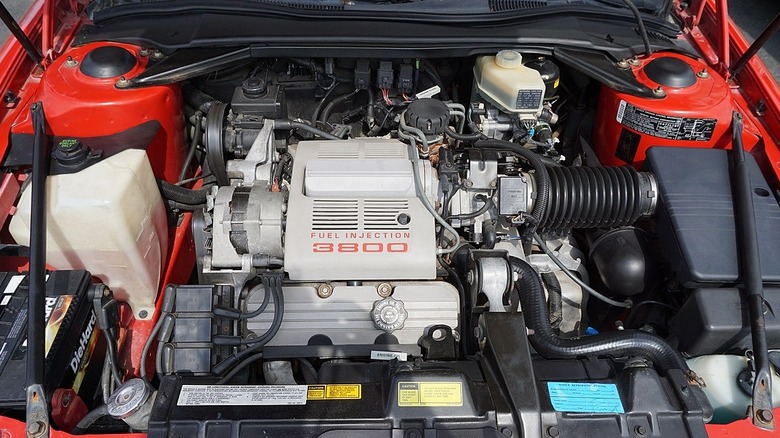Here's What Made The Buick 3800 V6 So Special
American automaker Buick launched the Special in 1962 — the first American car with a standard V6 gasoline engine. Parent company General Motors called its newest V6 engine the "Fireball," a derivative of Buick's 215 cubic-inch (3.5-liter) aluminum V8.
The new V6 and V8 engines were mostly the same, apart from two fewer cylinders and the former having a cast-iron block instead of aluminum. However, Buick dropped the V8 just two years after its initial release, and its V6 twin became an icon in American car culture.
It wasn't all honey and roses for Buick's new V6: The cast-iron block had a 90-degree cylinder bank angle, while the firing sequence was for a 120-degree pattern, giving the Fireball V6 a distinctive vibration. Instead of shoehorning a balance shaft to counter the shakes, GM engineers went for softer engine mounts to bring sanity amidst the chaos.
Despite its inherent shortcomings, the Buick V6 had stellar fuel efficiency and reliability, inspiring Buick to continue improving its strengths in the following years. For instance, the engine finally received an even-fire offset-pin crankshaft in 1977 to solve its characteristic shaking.
Welcome turbocharging
Even before the dawn of forced induction or turbocharging, the Buick 3800 V6 engine gained notoriety for being a workhorse. 1978 welcomed the Buick Regal and LeSabre Sport with a turbocharged 3.8-liter V6, good for about 165 horsepower. Buick upgraded the V6 with fortified connecting rods, a new flywheel, and a reconfigured harmonic balancer in 1981 — a precursor of what was coming a year after.
In 1982, Buick debuted the Regal T-Type and Grand National, equipped with a turbocharged V6 with up to 180 horsepower. But in 1987, Buick dropped the gauntlet with the GNX (Grand National eXperimental), a more hardcore Grand National with 276 horsepower. It may not sound like a lot in this modern world of 1,000-horsepower supercars, but 276 horses was a big deal in 1987.
With that much power, the GNX went from 0-60 mph in 4.7 seconds, enough to shame Italian exotics like Ferraris and Lamborghinis on the dragstrip at the time. In addition, it conquered the quarter mile in about 13 seconds, a remarkable feat for what is conceivably a practical, comfortable, and fun-to-drive roundabout.
Continuous engine improvements
The Buick V6 received an internal makeover in 1988, the same year that Buick rolled out its "3800 V6" branding. It gained a new balancer shaft, a steel camshaft, low-tension piston rings, and an electronic EGR (Exhaust Gas Recirculation) to lower emissions. The Series II model came in 1995 with even more improvements, like a higher 9.4:1 compression ratio, lightweight pistons, a new & lighter engine block, and a plastic intake manifold.
Buick's longstanding 3800 V6 would continue in the 2000s as the Series III L26 variant in the Buick LaCrosse, Lucerne, and Pontiac Grand Prix. However, production for the Buick 3800 V6 ended in 2008 to make room for the all-new, naturally-aspirated LZ4 3500 OHV V6/LY7 3600 DOHC supercharged V6 with overhead camshafts, variable valve timing, and aluminum blocks.
The Buick 3800 V6 was so good that GM retired it 10 years beyond its initial 1999 estimate. Moreover, the numerous improvements over its decades-long lifespan have made it among the smoothest-operating V6 gas engines in production, earning the Ward's 10 Best Engines of the 20th Century award for its sturdy build quality, silent operation, and easier serviceability.



